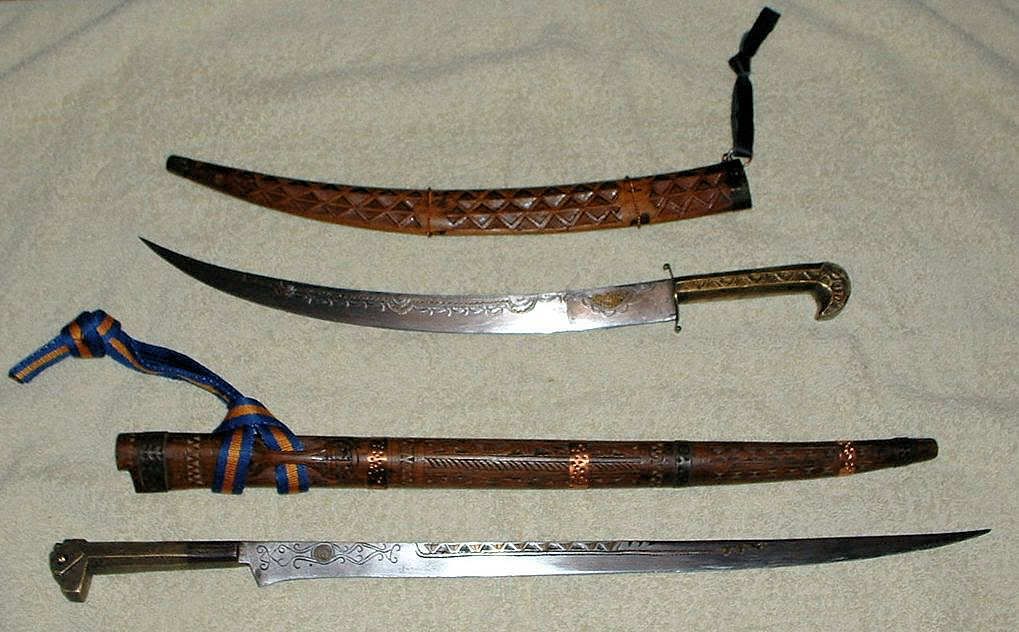
 |
|
|
|
|
#1 |
|
Member
Join Date: Oct 2009
Location: Northern California
Posts: 32
|
Just recieved this small flyssa earlier today. It measures about 16 inches long with a 12 inch blade. This is my first flyssa, so I don't know much about them. It seems to be in very good condition. Does anyone know from what time period it is? If you need any more pictures just let me know. Thanks.
|
|
|

|
|
|
#2 |
|
Arms Historian
Join Date: Dec 2004
Location: Route 66
Posts: 9,953
|
Hi JS,
Sorry nobody has responded to this, I guess its the time of year, everybody is extremely busy!!  The flyssa is a most intriguing weapon, which is of course distinct and indiginous to regions in Algeria, and most associated to the Berber groups known as Kabyles. Actually these are not a single tribe, but confederations of Berber tribes (Ar. gabail = the tribes)...with the 'flyssa' associated in particular with the Iflissen Im Bahr tribe in the Djurdjua range of Little Atlas mountains (NE Algeria). It is believed these tribes were the original producers of the weapon we know as the flyssa ( for Iflissen tribe) and there is considerable debate on the development of this form. We do know it is one of a large number of 'newcomers' to the edged weapons world, with first record of it in documentation c.1827. A French narrative of 1833 notes the 'kabyles' as producing blades, but the first provenanced example I know of that clearly shows the 'flyssa' in the style we are familiar with was from one captured in combat from Kabyles by the French Foreign Legion in 1857. Lacost-Desjardins however, states that by the 1850's the quality of these were in decline, and in the following decades became more for tourist trade. These appear to have come in a range of blade sizes from dagger size to incredibly long sword blades, and in my opinion, as the form diffused through Berber regions, wide range of quality became evident. I believe that your example would be most likely of early 20th century, and that these traditional forms were still produced as a sidearm for travellers. It should be noted that among young men in the regions of 'Kabylia' the acquisition of his sword (or dagger in later periods) was a sort of rite of passage, and the traditional forms remained important in that degree. The elaborate symbolism is regarded as deeply symbolic in the amuletic geometric figures key to the folk religion in these regions. Hope this is some help, and best wishes for happy holidays!!! Jim |
|
|

|
|
|
#3 |
|
Member
Join Date: Mar 2006
Location: Room 101, Glos. UK
Posts: 4,184
|
hi, the flyssa is one of those blades that have visual appeal, there is just something about them...
i'm not so sure how effective the larger ones would be in battle, but they sure look nice. as you do not show the scabbard, here's a picture of what the scabbard looks like on my 16in. bladed flyssa. the curved variant is also interesting.  a search using 'flyssa' here will produce a lot more info and pictures. |
|
|

|
|
|
#4 |
|
Member
Join Date: Oct 2009
Location: Northern California
Posts: 32
|
Thank you both for the information. I do understand that it is a busy time of year. I figured that it was from the early 20th century. Unfortunately, it did not come with a scabard. Thanks again and have a good Christmas!
|
|
|

|
 |
|
|